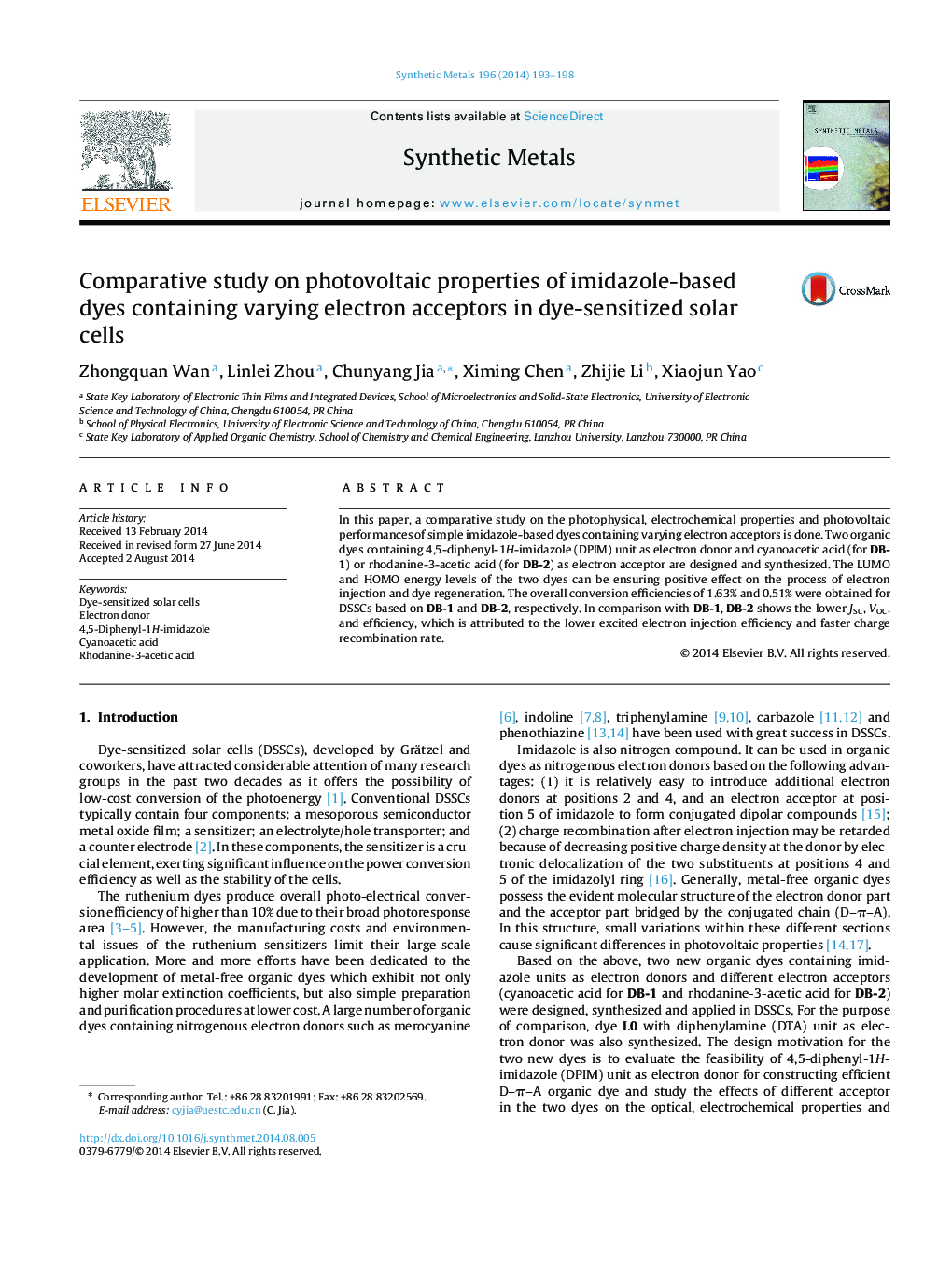| Article ID | Journal | Published Year | Pages | File Type |
|---|---|---|---|---|
| 1440854 | Synthetic Metals | 2014 | 6 Pages |
•Two imidazole-based organic dyes were synthesized and applied in DSSCs.•Effects of different electron acceptors on these organic dyes were studied.•DB-1 with cyanoacetic acid gives effective and faster electron injection.•DB-1 shows the better photovoltaic performance.
In this paper, a comparative study on the photophysical, electrochemical properties and photovoltaic performances of simple imidazole-based dyes containing varying electron acceptors is done. Two organic dyes containing 4,5-diphenyl-1H-imidazole (DPIM) unit as electron donor and cyanoacetic acid (for DB-1) or rhodanine-3-acetic acid (for DB-2) as electron acceptor are designed and synthesized. The LUMO and HOMO energy levels of the two dyes can be ensuring positive effect on the process of electron injection and dye regeneration. The overall conversion efficiencies of 1.63% and 0.51% were obtained for DSSCs based on DB-1 and DB-2, respectively. In comparison with DB-1, DB-2 shows the lower JSC, VOC, and efficiency, which is attributed to the lower excited electron injection efficiency and faster charge recombination rate.
Graphical abstractFigure optionsDownload full-size imageDownload as PowerPoint slide
